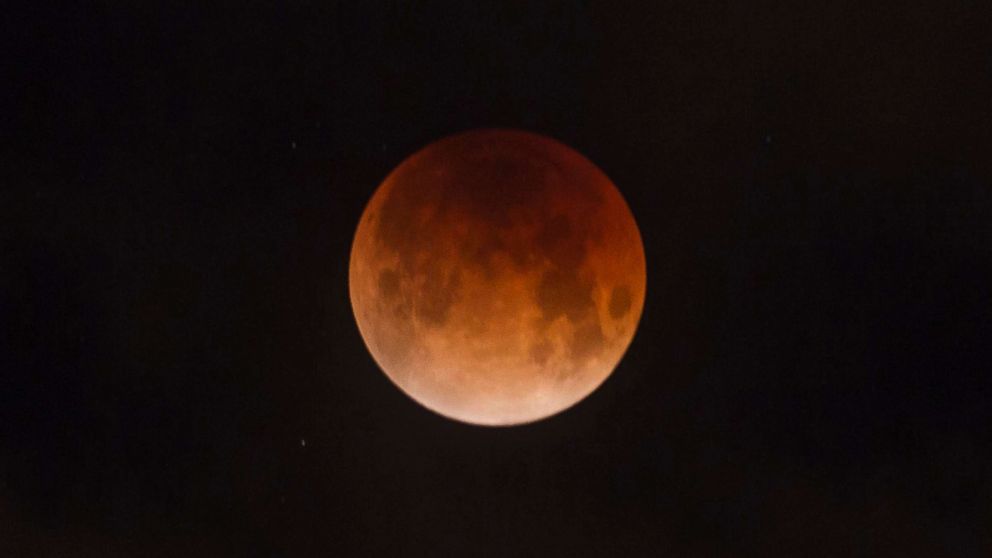
Grab your winter coat, some hot cocoa and your kid’s telescope on Sunday and head outside because the last super wolf blood moon won’t be showing its face for another 18 years.
While the celestial phenomenon sounds like something you’d read in a teenage werewolf novel, its actual meaning is derived from multiple sources.
The term “super” refers to the placement of the moon. This month, the moon will be at its closest point to Earth’s orbit, making it appear larger than normal.
The term “wolf” derives from the Native American nickname for January’s full moon and the wolves who “howled in hunger outside the villages,” according to the Farmer’s Almanac.
The term “blood” comes from the way the sun’s light bends and refracts off the Earth’s atmosphere and onto the moon’s surface, making it appear red or copper at times. This phenomenon, called “Rayleigh scattering,” is also what causes the beautiful colors of our sunrises and sunsets as well as what makes our sky look blue. NASA’s Jet Propulsion Laboratory in California notes, however, that clouds, dust, ash and organic matter in Earth’s atmosphere may change the expected color of a super wolf blood moon.
“We’re not sure what color it will turn. It really depends on the earth’s atmosphere, whether we’ve had storms, volcanic eruptions, all sorts of things,” explained Dr. David Reitzel, an astronomer and lecturer at the Griffith Observatory in Los Angeles.
“Sometimes you can even get a turquoise color to it. Sometimes the light that goes through the very top part of our atmosphere, it can bend and hit the moon, [making it appear turquoise],” he added.
Look for this phenomenon at the beginning and end of totality, he said.
Unlike a solar eclipse where viewers are instructed to use protective eyewear to observe the event, a lunar eclipse can we viewed with the naked eye. Experts recommend binoculars and telescopes to enhance the experience though.
If the skies are clear, the eclipse will be visible from anywhere in North America, according to the Griffith Observatory in Los Angeles. Viewers in Europe, Africa and the central Pacific may also be able to take in the total eclipse, expected to last roughly 62 minutes (the entire eclipse process will last roughly three hours and 17 minutes.)
If you’re watching on the East Coast, head outside at 9:36 p.m. ET Sunday to see the edge of the moon start to dim, considered a “partial” eclipse at this point. If you’ve got the patience, hang around for another two-and-a-half hours until 12:12 a.m. ET, when the total eclipse will be at its peak.
And if you’re on the moon?
“If you were on the moon during a total lunar eclipse, you would see a ring of sunrise and sunset around the earth,” explained Reitzel. “[And] if you were standing on the moon, the earth would look 4x bigger than normal, so it easily covers that sun up.”
If you’d prefer watching it from indoors, you’re out of luck – NASA will not be airing the event due to the government shutdown. You can, however, follow these astronauts who may live tweet from the International Space Station.
“You can watch the shadow moving across and the detail in the color, but really it’s an event that you can enjoy in your backyard with your family,” said Reitzel, before explaining the observatory is expecting thousands of people to attend the festivities on its lawns.
“And our parking lot only has room for 100,” he added with a laugh.





